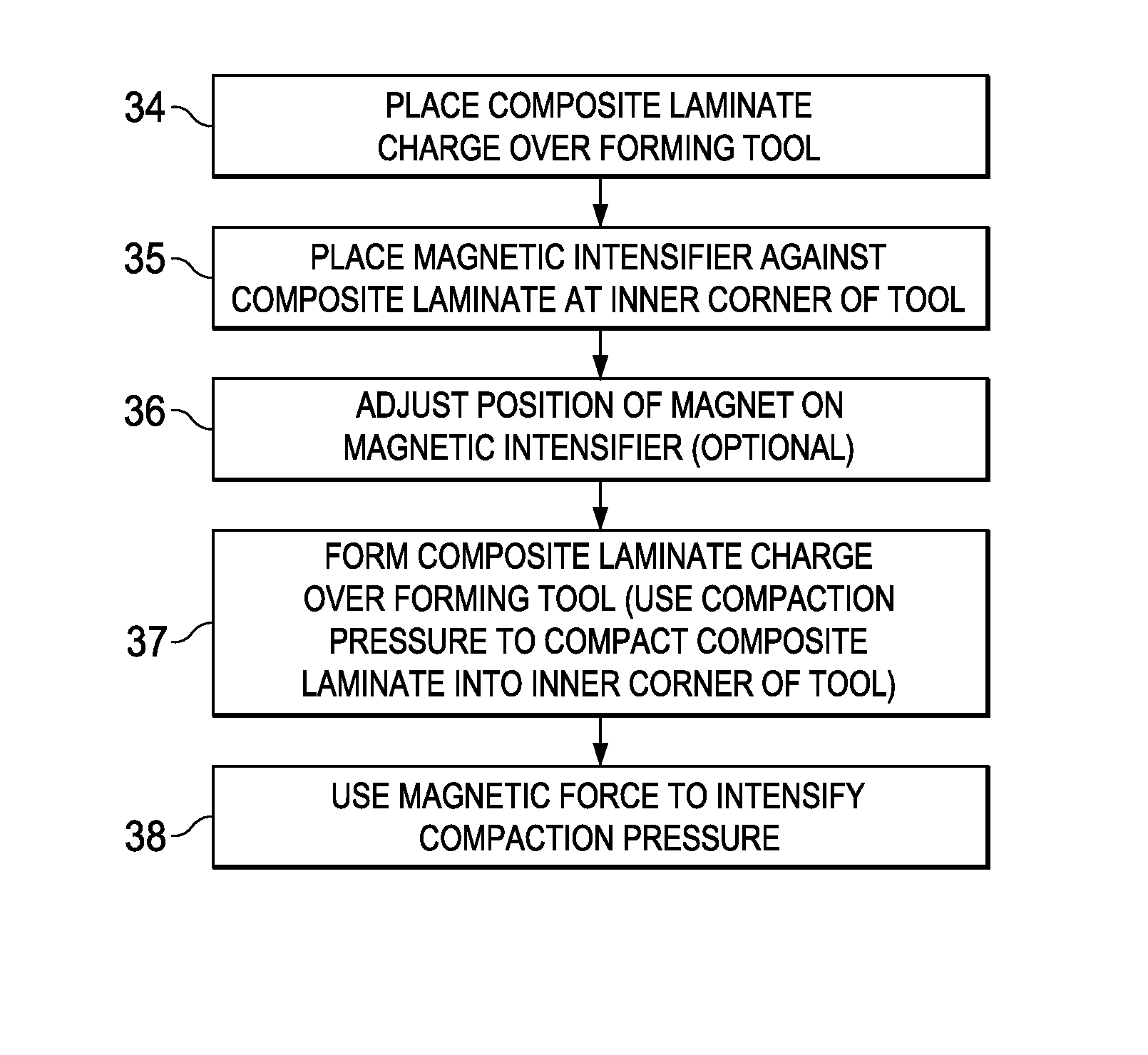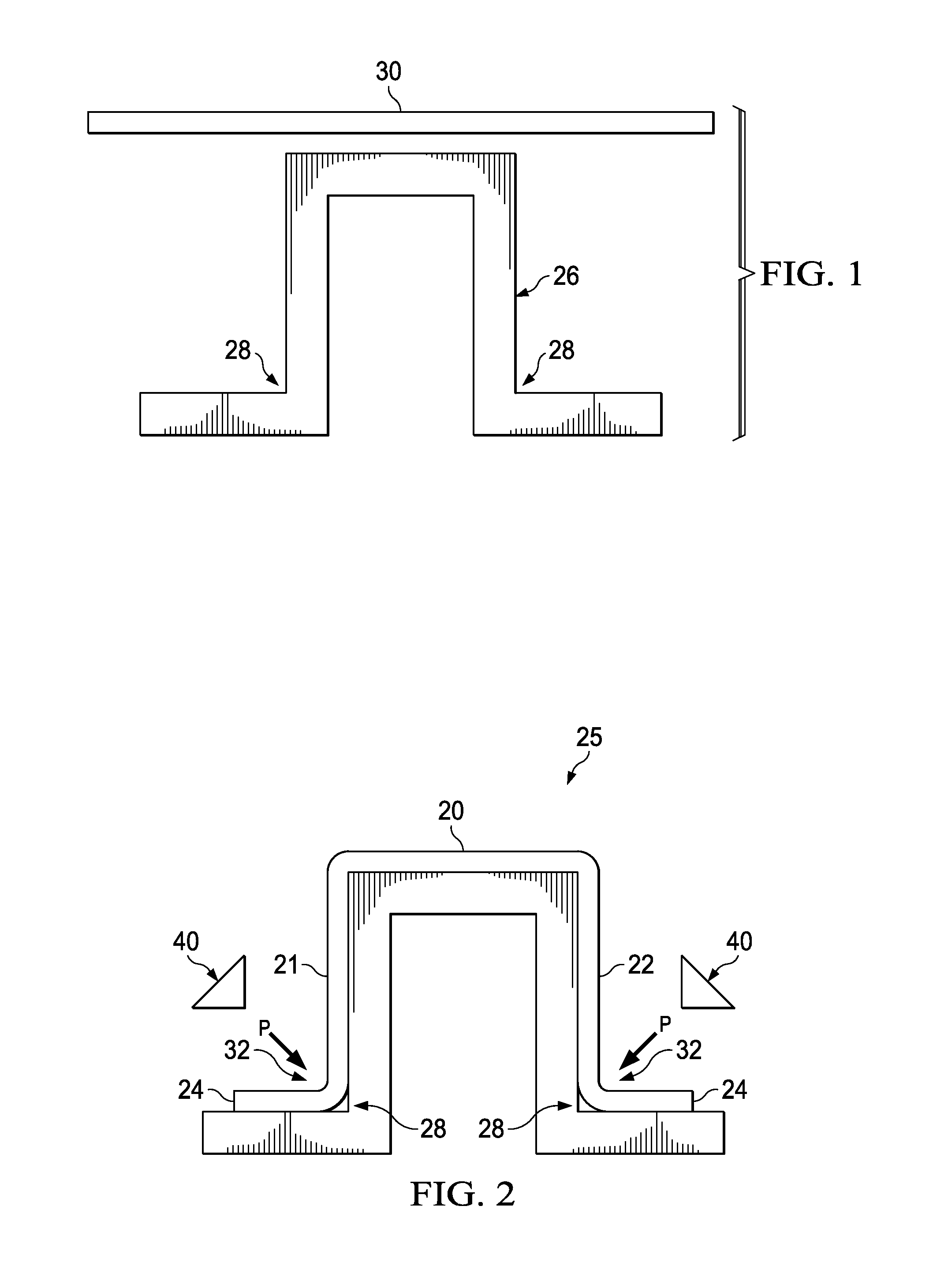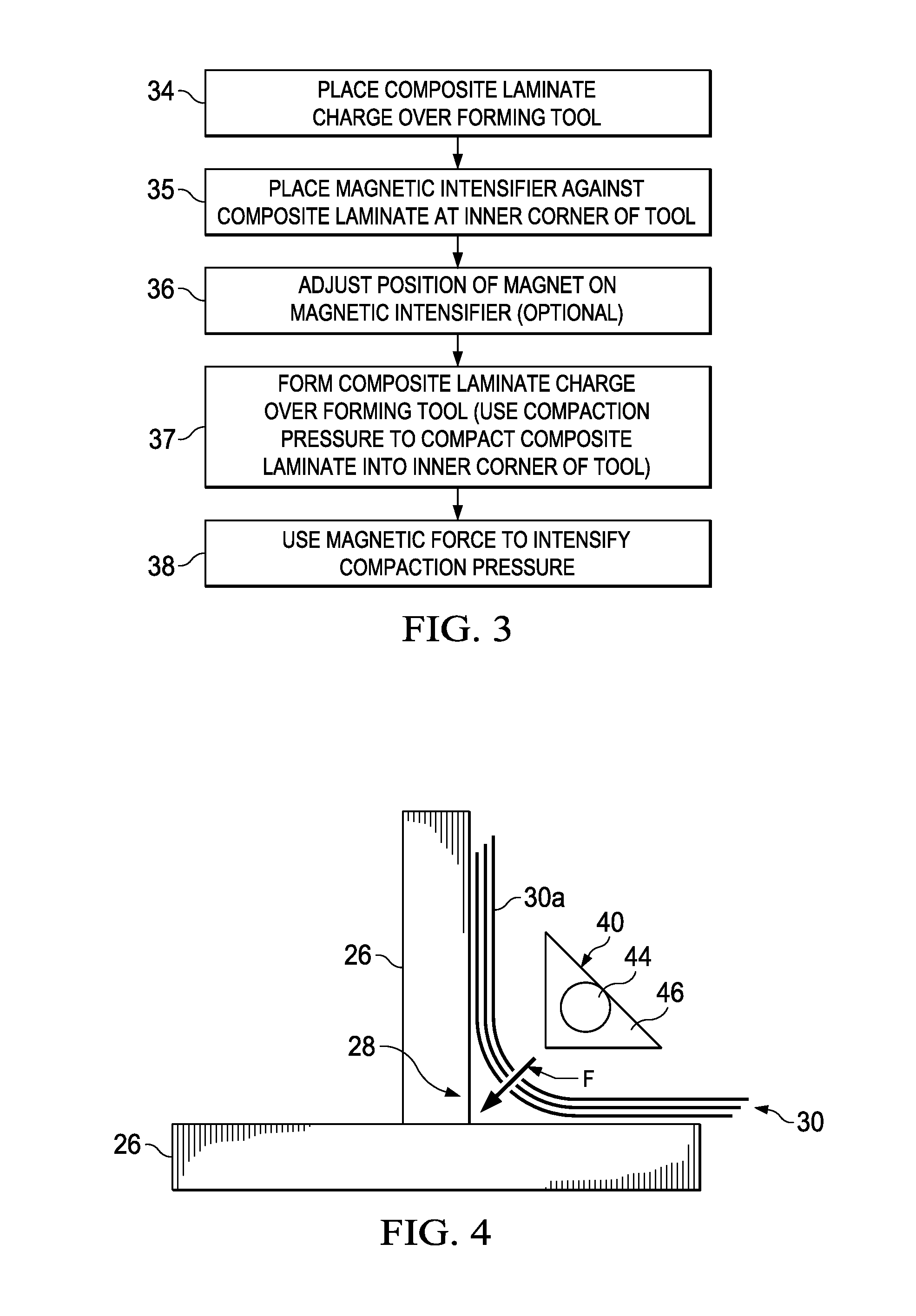Laminate Compaction Using Magnetic Force
a magnetic force and compaction technology, applied in the field of composite parts fabrication, can solve the problems of reducing the compaction pressure applied to the fiber pre-form, unable to fully form a multi-ply charge into these corners, and unable to achieve adequate compaction of the formed composite charge, etc., to achieve the effect of reducing bridging, reducing bridging, and being easy to install
- Summary
- Abstract
- Description
- Claims
- Application Information
AI Technical Summary
Benefits of technology
Problems solved by technology
Method used
Image
Examples
Embodiment Construction
[0030]Referring first to FIGS. 1, 2 and 3, a multi-ply uncured composite laminate charge 30 may be formed over a male tool 26. The charge 30 may comprise a layup of pre-preg, however as will be discussed later the charge 30 may comprise a dry fiber preform that is subsequently infused with resin within a mold (not shown). In the example shown in FIGS. 1 and 2, the formed part is a hat-shaped stringer 25 (FIG. 2), comprising three legs 20, 21, 22 and a pair of outwardly turned flanges 24. Each of the flanges 24 transitions to one of the legs 21, 22 through an inner radius 32 which is formed within a 90° inside corner 28 of the tool 26. In order to form each inner radius 32 into an inside corner 28, a compaction pressure P is applied to the laminate charge 30 at the inside corners 28. As will be described in more detail below, in accordance with the disclosed embodiments, the necessary compaction pressure P is applied using a magnetic force generated by a magnetic pressure intensifier...
PUM
| Property | Measurement | Unit |
|---|---|---|
| temperatures | aaaaa | aaaaa |
| temperatures | aaaaa | aaaaa |
| magnetic force | aaaaa | aaaaa |
Abstract
Description
Claims
Application Information
 Login to View More
Login to View More - R&D
- Intellectual Property
- Life Sciences
- Materials
- Tech Scout
- Unparalleled Data Quality
- Higher Quality Content
- 60% Fewer Hallucinations
Browse by: Latest US Patents, China's latest patents, Technical Efficacy Thesaurus, Application Domain, Technology Topic, Popular Technical Reports.
© 2025 PatSnap. All rights reserved.Legal|Privacy policy|Modern Slavery Act Transparency Statement|Sitemap|About US| Contact US: help@patsnap.com



